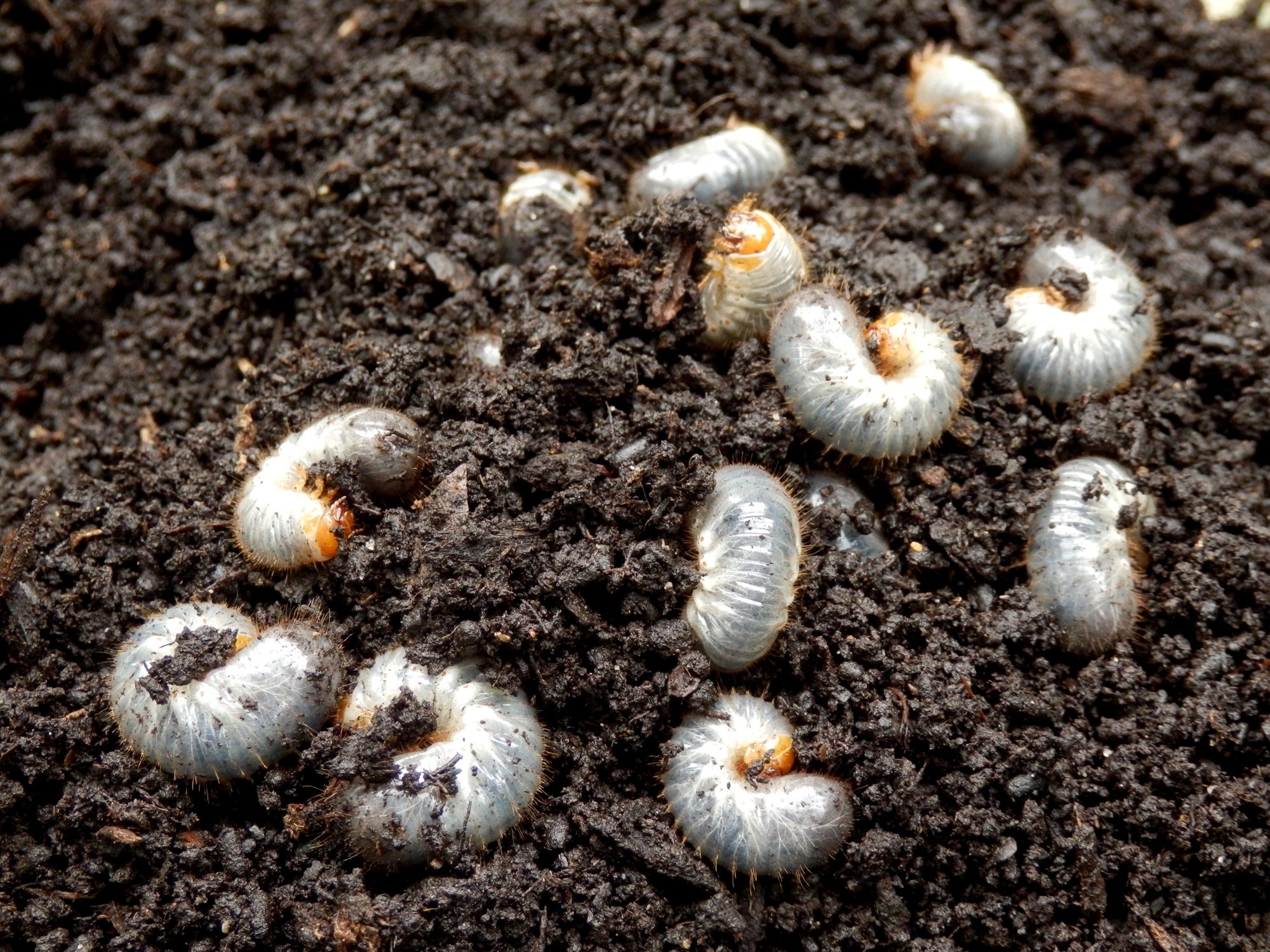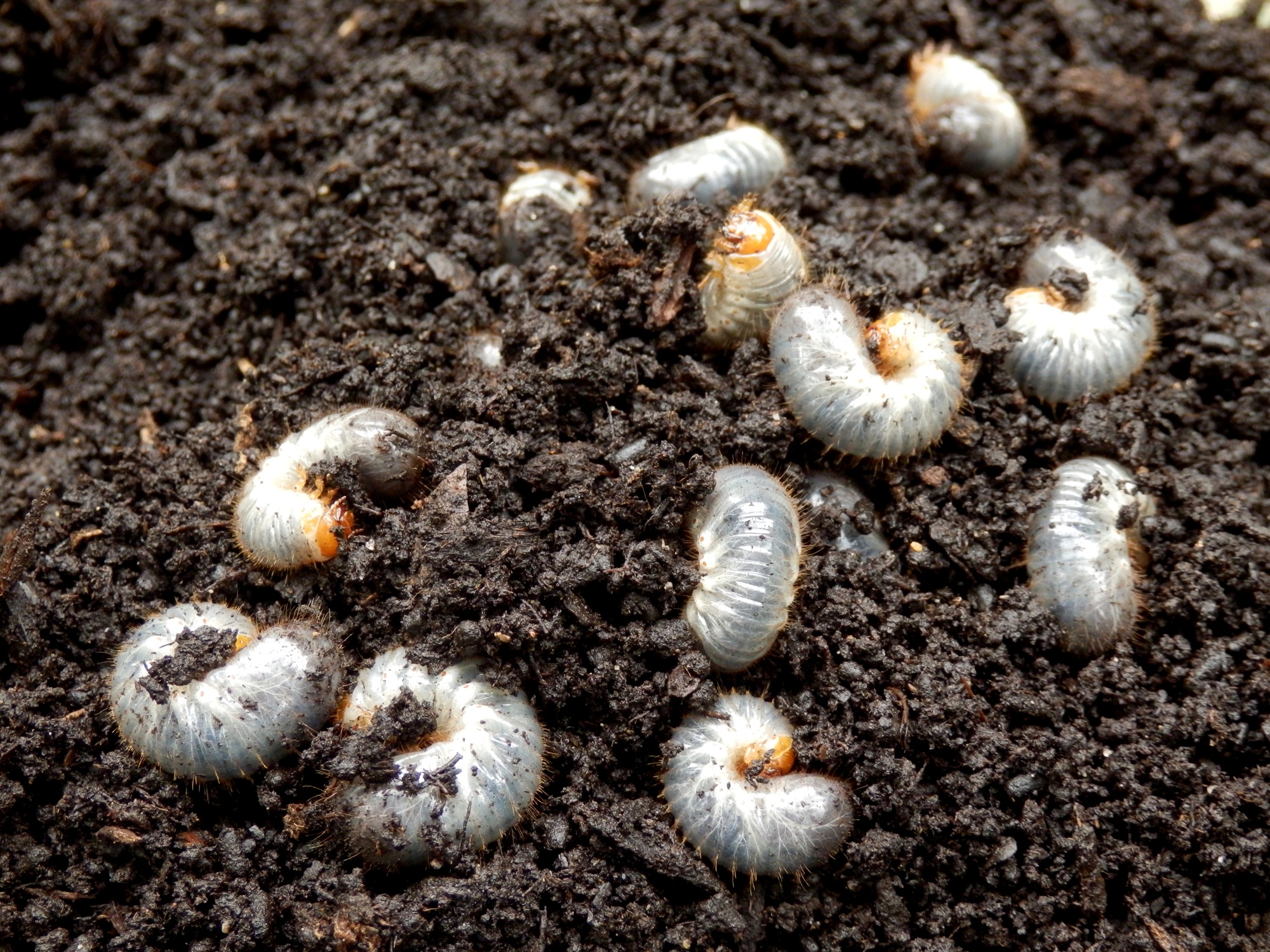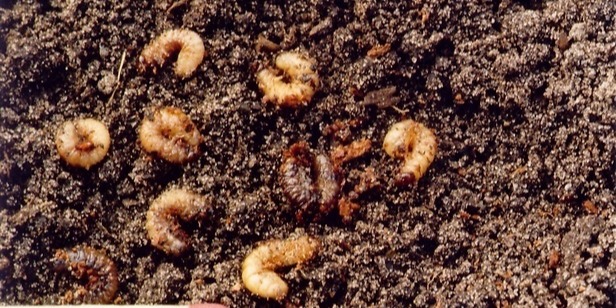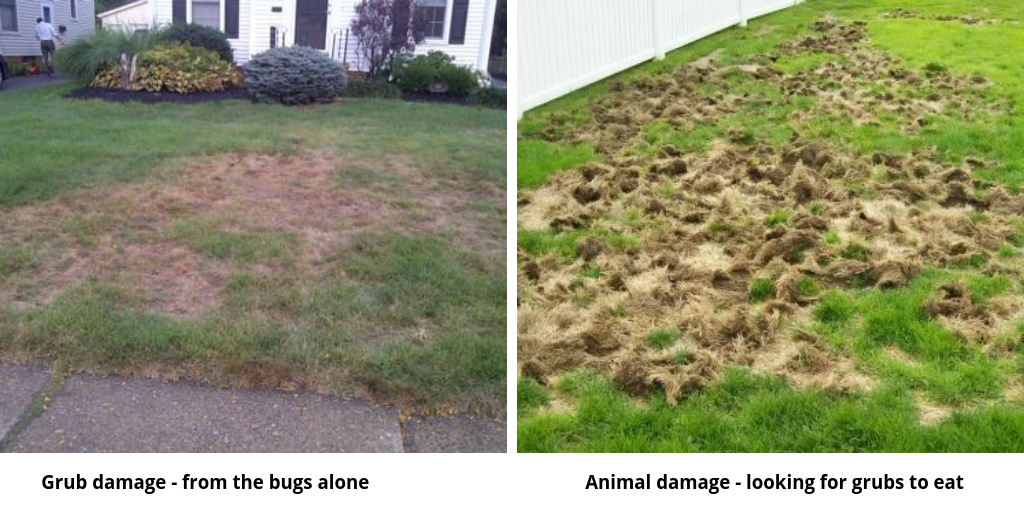4 min read
Grub Prevention Season Is Here
By: Robert Bourne, Nutri-Lawn Vancouver on May 2, 2019 1:38:21 PM


GRUBS!! There aren’t many here in the Lower Mainland who aren’t familiar with that word or who haven’t seen animals attacking either theirs or their neighbour’s lawns. It is a difficult issue for homeowners year after year, spending money to repair their lawn only to see the skunks, raccoons and crows back at their lawn the very next year.
Now, animals are simple creatures and know that if a lawn was full of food last year, that there is a really great chance that there will be food there again! Most of the time they aren’t wrong - even if that specific lawn no longer has grubs they can eat, chances are a nearby lawn does have grubs they can feast on.
The European Chafer Beetle can fly up to 5km each year, so all lawns within that radius of an infested lawn are in danger of getting a new generation of grubs. This beetle only has a one year life cycle, so once they have mated and laid their eggs, the adults will die, leaving their grubs in your lawn to grow.
When getting a grub prevention application, it needs to be timed properly to provide you with the best efficacy possible. When it comes to Nematode applications, they need to be timed so that the grubs are in their beginning life stages (called an instar) to make sure that the Nematode has the best chance possible to get rid of that grub. These beginning instars usually occur in July and August, making these weeks the best time to have this application completed.
Let’s chat a bit about Nematodes. These are semi-aquatic, microscopic roundworms that are a natural predator of the European Chafer Beetle Grub. The reason for the precise timing of the application is how the Nematode attacks the grub - they enter and effectively eat the grub from the inside out. Gross, I know, but effective! If the grub gets too big, the Nematode is not able to get through the hard exterior of the grub and cannot do its’ job.

There are millions of different species of Nematodes and not all of them will help with your grub problem; of the species that will eat your grubs, there are 2 sub-species: sitters and seekers. The sitters do just as it sounds, wherever they land from the application, is where they will stay and if a grub passes by them - they will eat it. The seekers are active and will move throughout your lawn trying to find the grubs to eat - this is the species you want! Due to the amount of choices here, it is best to leave the decision of which species to use up to your Local Nutri-Lawn Experts!
The next thing I need to mention is watering your Nematodes! Since they are semi-aquatic, they do need to stay wet for 2 - 3 weeks. Most of the time that we hear a Nematode application was not successful is due to improper watering. Daily watering (sometimes multiple times per day) is needed for a minimum of 3 weeks. In fact, we recommend that our clients get a watering permit from their local City Hall to allow for watering outside of our watering restrictions (please contact your City for more information on watering permits) and to check the moisture in the soil throughout the day (when possible). Nematodes need to stay wet so much that if they happen to travel to a part of your lawn that is not wet, they will die leaving your lawn unprotected.
Now, for those not able to keep their lawn wet for that period of time, Nutri-Lawn is happy to introduce our New Grub Reduction Application! This new application uses a bio-insecticide that abides by all Pesticide By-laws in the Lower Mainland and provides you with up to 90% efficacy!
This is a granular application and will be starting in May through to fall instead of July and August and only requires 1” of water within 72 hours of the application! It is not harmful to the grass, flowering plants, pets, people or bees! The way this application works is when the grub comes into contact with the granule, it then disrupts their digestive system stopping them from being able to feast on your lawn.
Now, before we part for the week - let’s chat about the difference between animal damage and grub damage. Let’s take a look at these two pictures:

In the first image, we see little circular patterns in the lawn that are browning. Brown circles can be a sign of a few different things, but when it comes to Grub damage, these circles will get bigger as the grub move throughout your lawn continuing to eat.
In the second image, we see these same brown areas, however, there are also parts of the lawn that have either been pecked at by crows or rolled back and destroyed by the skunks and raccoons. As we mentioned earlier, animals are simple and looking for food - unfortunately, Nematodes nor Grub Reduction Applications will prevent or stop animals from digging in your lawn if they want to look. The best prevention for these animals is a healthy lawn and yearly Grub Prevention applications. For more tips on getting a healthy lawn, check out our blog post here and for tips on deterring those animals, check out this blog post.
Or, to answer any of the questions you may still have, feel free to chat with us, find us on social meda or send us an email - we’re always happy to help. 
Take back your weekend and let Nutri-Lawn take care of your lawn!
Related Posts
Effective Grub Control: A Key to a Lush Lawn - Nutri-Lawn's Guide
A lush, green lawn is a source of pride for homeowners.. However, a common and destructive threat...
Grumbling About Grubs? Get Rid of Them with Proper Lawn Care
Don't get too comfortable with the warm weather nearing – spring lawn care is back in action and...
Grub Talk: The Life Cycle of the White Grub
Welcome to Grub Talk, ladies and gentleman, a weekly educational series on the life and times of...



